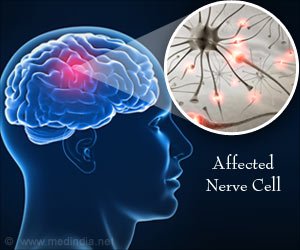Brain Cell Mysteries in Neurodegenerative Diseases

“When we transplant healthy human glial progenitor cells into the brains of mice that have been already colonized by diseased human brain cells, the healthy cells outcompete the sick cells. Even more remarkably, we also found that younger cells replace aged cells when transplanted into otherwise healthy brains. That makes the potential use of glial cell transplantation very broad because we could go into all sorts of disease targets where we have older glial cell populations,” says Steve Goldman, who is a professor at the Center for Translational Neuromedicine at the University of Copenhagen. He is the senior author of the new study.
Glial progenitor cells can make cells called astrocytes, the support cells that protect and ensure the supply of oxygen and nutrients from blood vessels to neurons while removing waste substances, and others called oligodendrocytes, which make myelin, the insulating substance of the brain’s white matter.
Advertisement
Although the study was conducted in mice, the humanized brain method developed by Steve Goldman and his group allowed the examination of human brain cells in the live adult brain, making it likely that their results will apply to human patients as well.
Healthy Cells Outcompete Diseased Cells
In the study, the researchers transplanted healthy glial cells into the brains of mice already populated with diseased human glial cells.
Previously, the researchers had demonstrated the benefits of transplanting healthy human cells into mouse models of Huntington’s disease.
However, since those experiments involved human cells replacing mouse brain cells, the researchers needed to prove that the same outcome would occur when replacing human cells with human cells.
“We transplanted the healthy human cells into the mice that were ‘humanized’ with the mutant Huntington-expressing glia, and the healthy glial cells outcompeted and replaced the diseased glia, actually eradicating the diseased glial population,” Steve Goldman says.
The same outcome was observed when the researchers attempted to replace non-diseased, healthy but aged glial cells with new cells. The younger cells successfully outcompeted the aged cells.
“That told us that it wasn’t just a question of healthy cells outcompeting the diseased cells of Huntington’s disease, but that this was much broader in terms of its potential use because we could go into all sorts of disease targets where we have older or diseased glial populations. The advantage is significant in terms of where this could go because there are all sorts of diseases of glial cells,” Steve Goldman says.
That includes illnesses like multiple sclerosis and white matter stroke, and also neurodegenerative diseases like Huntington’s, ALS, and some genetic schizophrenias.
Treatments are Only a Few Years Off
The new research brings great perspectives for new treatments of complex diseases.
“If we can replace the diseased and aged cells, then we should be able to restore aspects of normal function in these degenerative diseases, as we have seen with our experimental models of Huntington’s disease,” says Steve Goldman, who adds:
“But that’s a proof of principle because we think the same thing would work in some of these other diseases as well. In ALS, some of the frontotemporal dementias, and even in some of the hereditary schizophrenia, as well as in the myelin diseases and age-related white matter loss.”
The possibility of new treatments is not far off. The researchers are already proposing clinical trials to test the effect on three different brain diseases, that include Huntington’s disease as well as two diseases of white matter, progressive multiple sclerosis and Pelizaeus-Merzbacher disease.
“Things are fairly far along. We still need to be sure of the long-term safety of the cells after we transplant them. But we are expecting to have that data in about a year and a half,” says Steve Goldman and adds:
“At that point, we hopefully can get the approval to go into patients, so I would hope that we could initiate trials of this approach within two years from now.”
The paper has just been published in Nature Biotechnology.
Reference :
- Young glial progenitor cells competitively replace aged and diseased human glia in the adult chimeric mouse brain
– (https://www.nature.com/articles/s41587-023-01798-5)
Source: Eurekalert
Source link
#Brain #Cell #Mysteries #Neurodegenerative #Diseases



